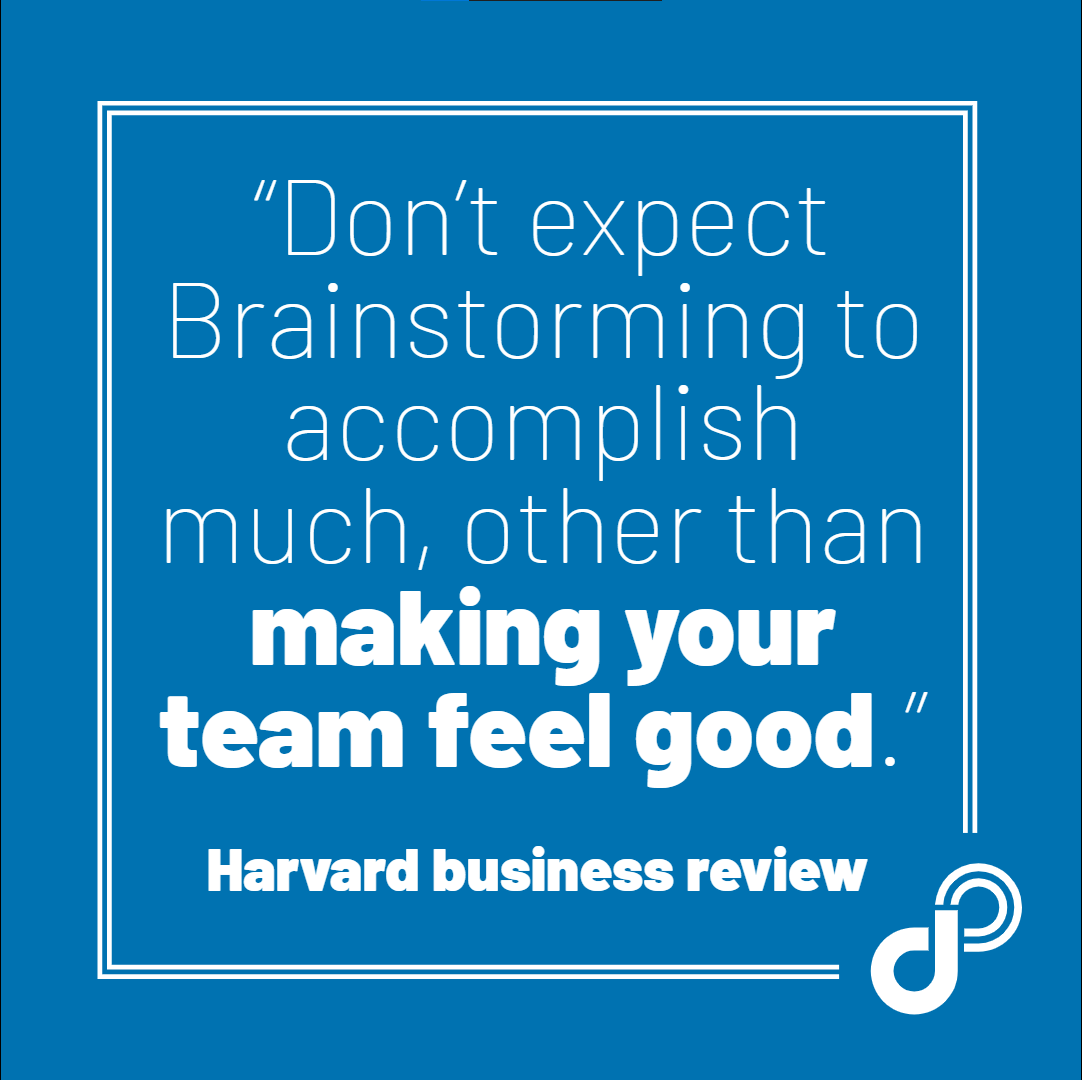Brainstorming was first officially described by the advertising executive Alex Osborn in his book “How To Think” in 1942. Everyone was like: #WHOAAAAA! It was a collaborative exercise on eye level, and employees really enjoyed it in those times which were driven mostly in a patriarchic manner.
“Individuals generate 80% more ideas”
Universities soon became aware and wanted to support the claim, delivering studies to prove that brainstorming is the best tool for generating many quality ideas. The first study we know about was done in 1958 by Taylor doing just the opposite. Many others followed, showing that individuals outperform group-brainstorming with about 80% MORE IDEAS. Even worse, the quality of the ideas of individual idea generation was in general higher than those of groups. Unfortunately, most of the hype around brainstorming is not true.
Now, more than 70years and hundreds of studies later, we still sit in meeting rooms brainstorming, or even worse, discussing and disputing about who has the best idea. Why? Because one thing could repeatedly be proven in the studies: It feels better to brainstorm in a group if you follow Osborns 4 principles (no wrong answers, no judgment, quantity>quality, build upon others ideas). Still, the results are worse.

“You cannot not judge”
Part of it is because people cannot not judge. Even you do not HEAR criticism, you still feel that not everyone in the room agrees. So you rather (subconsciously) give safe ideas hoping for acceptance than new and disruptive ones. Also, you are primed on the ideas of others, leading your focus away from the unsaid, and thus, opportunities get lost. There are more group dynamics in play. But what counts is that we need to finally agree on better ways to generate ideas.
So, how can you leverage many qualitative ideas without losing the fun of doing it? Try the “Alone together”-principle. It leverages both, individuals and group strengths.
The process of Working Alone together:
- Individual brainstorm
Make it a quantitative exercise, ideas do not have to be good, rather write down anything that comes to mind, as it may inspire for better ideas. - Individual presentation
No discussion to avoid feeling criticized leading to “safe” ideas in a long run. Questions to understand the input are allowed. - Group clustering
Instead of “one idea against the other”, alliances are built that makes attendees feel safe: “my idea BELONGS to your idea”
Erase doubles or inputs that are 80% similar to avoid vote-spread - Group voting
Leverage the swarm intelligence of which idea has the most impact - Sorting into a voting tree
No idea is wrong, just sort according to impact, other ideas can be still part of the solution later, when ideas are combined

Sure, there is more to know, e.g. that voting can be done based on preferences or resistance. Or that if attendees vote, you should not say “vote for your favorites”, but “vote for the inputs that according to your expertise have the most impact on our goal”. However, even if you start simple, the results will be significantly better than with classic group brainstorming – promise!
Your DAY8-Founders
Back to DAY8.io
Want to learn how it is done?
- Free 1.5h Introduction course (UDEMY LINK)
- Join us on one of our (free) events (EVENTBRITE LINK)
More of this? Follow us on LinkedIn



